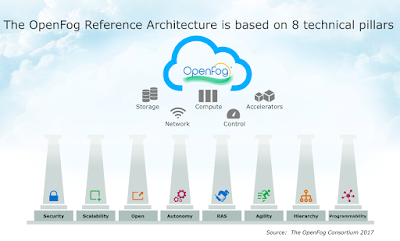The IEEE Standards Association (IEEE-SA) has adopted The OpenFog Consortium’s OpenFog Reference Architecture for fog computing as an official standard.
The new standard, known as IEEE 1934™, relies on the reference architecture as a universal technical framework that enables the data-intensive requirements of the Internet of Things (IoT), 5G and artificial intelligence (AI) applications.
“We now have an industry-backed and -supported blueprint that will supercharge the development of new applications and business models made possible through fog computing,” said Helder Antunes, chairman of the OpenFog Consortium and senior director, Cisco. “This is a significant milestone for OpenFog and a monumental inflection point for those companies and industries that will benefit from the ensuing innovation and market growth made possible by the standard.”
The OpenFog Consortium, which was founded more than two years ago, describes fog computing as a system-level horizontal architecture that distributes resources and services of computing, storage, control and networking anywhere along the cloud-to-things continuum. It supports multiple industry verticals and application domains, enables services and applications to be distributed closer to the data-producing sources, and extends from the things, over the network edges, through the cloud and across multiple protocol layers.
OpenFog Consortium Releases its Reference Architecture
Fog computing is the system-level architecture that brings computing, storage, control, and networking functions closer to the data-producing sources along the cloud-to-thing continuum. The new reference architecture aims to enable high-performance, interoperability and security in complex digital transactions.
 In brief, the OpenFog Reference Architecture contains a medium- to high-level view of system architectures for fog nodes (smart, connected devices) and networks, deployment and hierarchy models, and use cases. It is based on eight core technical principles, termed pillars, which represent the key attributes that a system needs to encompass to be defined as "OpenFog." These pillars include security, scalability, openness, autonomy, RAS (reliability, availability, and serviceability), agility, hierarchy and programmability.
In brief, the OpenFog Reference Architecture contains a medium- to high-level view of system architectures for fog nodes (smart, connected devices) and networks, deployment and hierarchy models, and use cases. It is based on eight core technical principles, termed pillars, which represent the key attributes that a system needs to encompass to be defined as "OpenFog." These pillars include security, scalability, openness, autonomy, RAS (reliability, availability, and serviceability), agility, hierarchy and programmability.








